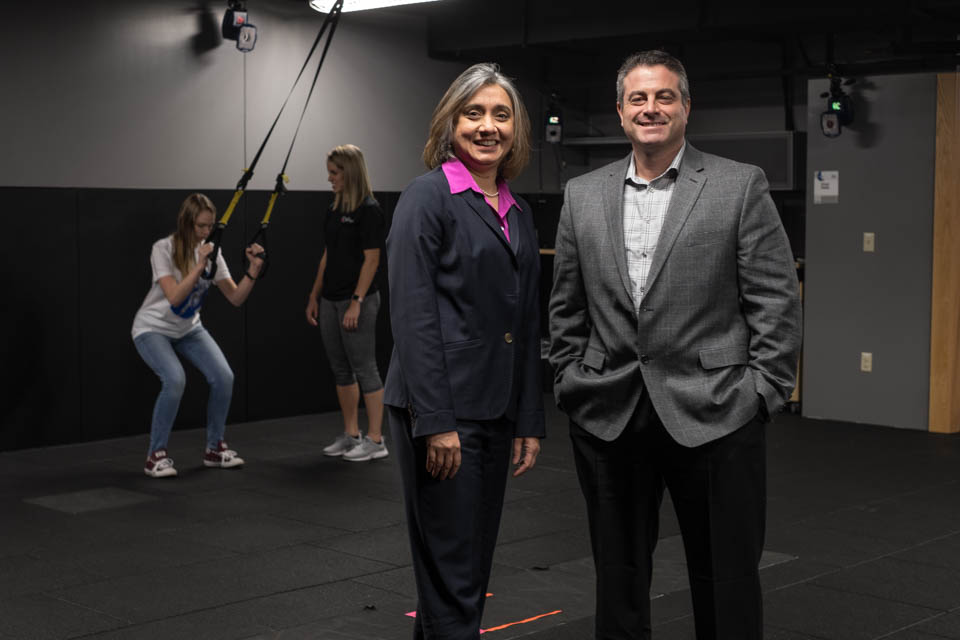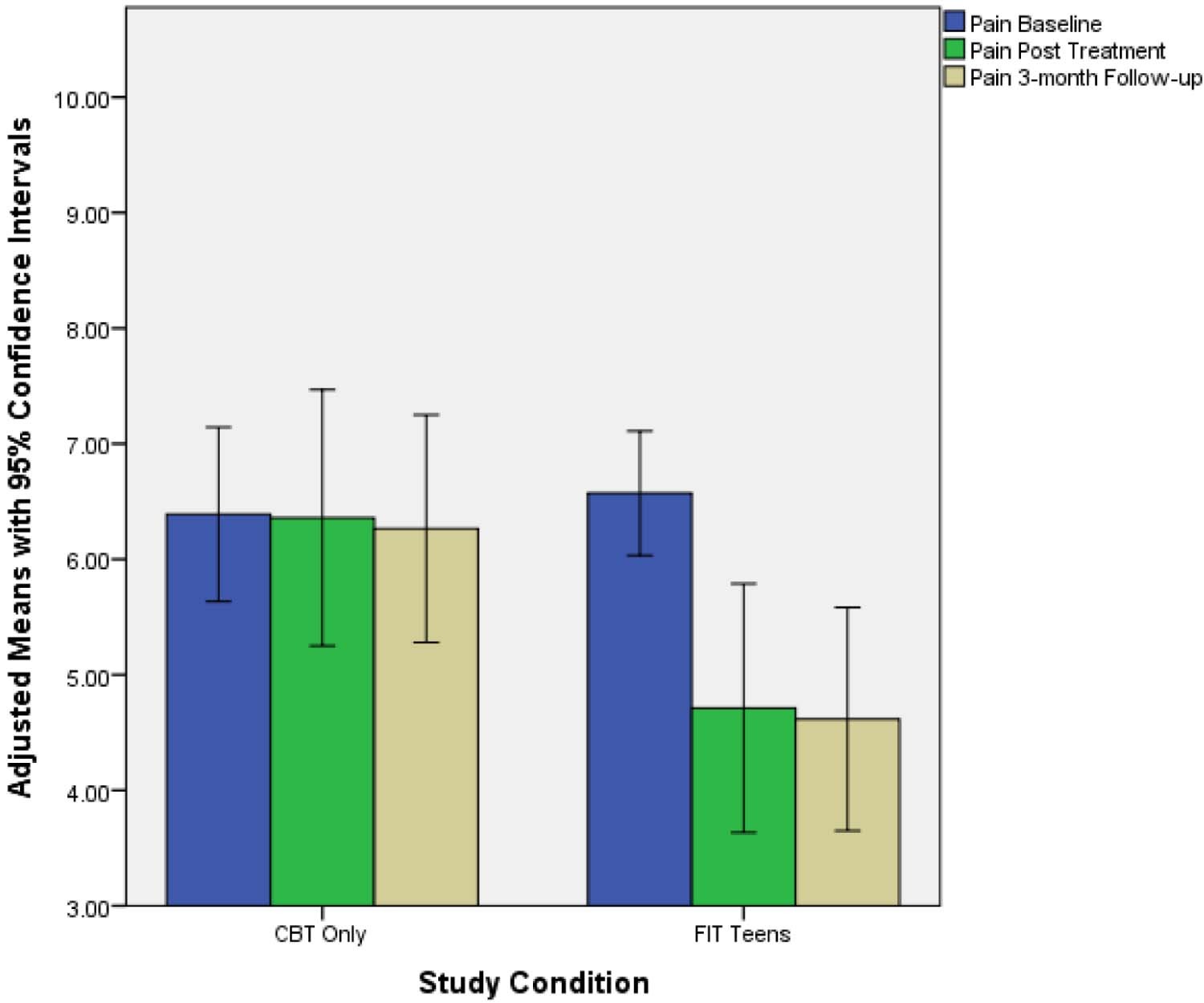ACTS One, Scene One
Post Date: July 3, 2019 | Publish Date: Spring 2019

Novel Café-Style Approach to Collaboration Leads to More Bridges and Fewer Silos Among Researchers in the Alliance for Clinical and Translational Science.
In creating a semi-structured strategy to improve collaboration among researchers of mind, brain and behavior, Susmita Kashikar-Zuck’s approach provided a dash of simplicity—add art to science and stir.
The clinical psychologist decided to bypass the siloed, meeting-heavy mentality of many large research institutions. She wanted to engage faculty on the cross-pollination of ideas in small groups, emphasize overarching themes over narrowly defined topics, and keep it short.
Her secret ingredients included conversation, cookies, crayons and craft paper. It was a winning recipe.
The Discovery Café concept is part of the Alliance for Clinical and Translational Science (ACTS), an initiative launched as part of the larger Mind Brain Behavior Collaborative at Cincinnati Children’s. The café was born from a listening tour Kashikar-Zuck undertook in fall 2017. Researchers told her they wanted communication and culture, not more lectures, especially long ones.
In its first year, ACTS has grown into an impassioned group of scientists in 16 divisions who share data, grant opportunities, resources and insights. Kashikar-Zuck likens the process to a qualitative study.
“The goal was to identify synergies, to galvanize research across Cincinnati Children’s,” says Kashikar-Zuck, PhD, Research Director in the Division of Behavioral Medicine and Clinical Psychology (BMCP). “That’s how it was different. Some researchers were working together, some were not, but generally there were many clinical and research silos. It’s one of the mind/brain areas where we could show how people can cross-cut their ideas.”
Its name is borrowed from the World Café, a similarly informal approach that has gained traction at the Centers for Disease Control and Prevention, the United Nations, and in the corporate and governmental worlds.
The Mind Brain Behavior (MBB) initiative at Cincinnati Children’s has two arms: basic research, headed up by Steve Danzer, PhD, of the Department of Anesthesia, and the translational arm that Kashikar-Zuck leads.
Creating ACTS was suggested by MBB directors Lori Stark, PhD, Director, BMCP and Tracy Glauser, MD, Associate Director of the Cincinnati Children’s Research Foundation.
“I told Lori and Tracy, this novel approach to bring faculty together could really flop,” she recalls with a smile. “But, I said, let’s see how people react to the full idea of getting together under this umbrella. I was, frankly, a little concerned.”
She needn’t have been.
“We needed a catalyst,” says Greg Myer, PhD, Director of Research in the Division of Sports Medicine. “Crayolas are not part of our usual tool box, but I think they were critical to our expanded thinking.”

Dean Beebe, PhD, Director of the Neuropsychology Program in BMCP, put it this way: “I didn’t know what to expect going in. I had no doubt about the goals, and I do think it’s the right thing to do. I’m open to the idea of trying things out. Besides, preconceived notions kind of defeat the whole purpose, don’t they?”
Connecting Parallel Roads Of Research With Side Streets
In the first two sessions of the Discovery Café, Kashikar-Zuck, who specializes in pediatric pain research, saw common methodologies used in different ways.
“For example, pediatric migraine, fibromyalgia, and functional abdominal pain are conditions treated by neurology, rheumatology and GI specialists,” she says, “and what they all have in common is that the pain is brain-based.”
From Beebe, café participants learned about research using a mobile device called an actigraphy sensor, a wristwatch-like unit that assesses children’s rest/activity cycles. He also was awarded MBB’s first Research, Innovation and Pilot grant for his clinical-translational project on sleep and traumatic brain injury.
Chris King, PhD, Department of Anesthesia, shared his insights into inflammation and gene expression. Ernest Pedapati, MD, MS, of the Division of Psychiatry, contributed his extensive knowledge of neurodevelopmental disorders such as autism and fragile X syndrome.
From Jeffery Epstein, PhD, Director of the Center for ADHD, the team learned about his web-based, information portal that both clinicians and families can access. With new language, the template can be easily replicated by other care providers and researchers.
Kashikar-Zuck, who directs the Behavioral Pain Management Research Lab, provided expert analysis of cognitive behavioral therapy (CBT), particularly in juvenile fibromyalgia (JFM), a painful musculoskeletal disorder. That makes her something of an unlikely research partner with Myer, who focuses on injury treatment and prevention in athletes.
“One thing I liked about the café was that it pulled you out of your comfort zone,” Myer says. “It forced us to think and talk to other types of researchers. That was a really important component.”
Kashikar-Zuck had not previously seen much crossover potential in the science of biomechanics. JFM is a pain condition associated with reduced physical function. While athletes are often highly self-motivated and conditioned for physical challenge, exercise can prompt the very pain JFM patients try to avoid.
So, she wondered, what do biomarkers and biomechanics have to do with kids undergoing CBT for chronic pain? Turns out, a lot.

Mixing Mind And Muscle
“All credit to her for the godsend and gumption to pull this off,” Myer says of Kashikar-Zuck and the Discovery Café. “We’re not two groups that would normally collaborate. She’s opened my eyes to that. It’s taught me that while we focus on training the muscles, we may be missing something with the mind. Likewise, she trains the mind but less so the muscles.”
Pre-ACTS studies led by co-authors Kashikar-Zuck and Myer, published in 2015 and 2016 in Arthritis Care & Research, demonstrated that CBT was effective in improving physical activity, but had little or no impact on pain reduction.
In response, they developed a specialized program, assigning their 36 subjects to either CBT-only treatment or their novel intervention called Fibromyalgia Integrative Training for Teens (FIT Teens)—a blend of CBT strategies and specialized neuromuscular exercise training.
Much of exercise occurred at the Sports Medicine lab, a first for Kashikar-Zuck. Meanwhile, she passed along her new insights to Beebe and others.
“Susmita is doing the biomechanics,” says Beebe, who studies the impact of childhood sleep pathology on neuropsychological functioning. “And I’ve done really interesting research in simulation work. We’re not a classic collaborative, so the question is, how do we harness that? That’s when you realize how cool these things are.”
New Insights On Pain, Movement
Research teams had Kashikar-Zuck’s patients do things Myer’s patients do: climbing stairs, resistance exercises, jumping off boxes of varying heights, and so on.
“We kept it health-focused. Teens love having a trainer, they do not love having a therapist,” she says. “And the results indicate that there might be something about exercise that changes the tone of the brain, the way pain is perceived and reduced.”
In September 2018, the team published results from a pilot study in The Journal of Pain, reporting that FIT Teens outperformed CBT-only treatment, even in pain reduction.
“It has worked out beautifully. The training is group-based, so it has a social aspect that energizes teens with fibromyalgia,” Kashikar-Zuck says. “Once they decide to participate, we’ve had 95 percent retention. Parents have been blown away.”
We are now conducting the largest clinical trial for the treatment of juvenile fibromyalgia with seven study sites across North America.
Can Internal Success Be Exported?
Collaboration across divisions has been a tradition at Cincinnati Children’s that the MBB effort seeks to accelerate in neuroscience. But can this kind of sharing also extend beyond the campus?
As teens grow up and transition into adult care settings, how will these patients continue the progress they’ve had in FIT Teens? It may be a challenge.
“People have tried and ran smack dab into organizational types of issues. Institutions are set up in different ways, so you think, OK, that’s not going to work,” Kashikar-Zuck says. “But there’s so much interest in improved approaches, whether it’s for pain, epilepsy or migraine. And as researchers, we’re trained to be persistent.”
—By Tom O’Neill





